
views
- Hide in cluttered rooms or rooms with lots of decor to better blend in. Or, hide in tall grass or dense foliage if you’re playing outside.
- As a hider, keep track of how much time you have to hide, survey your options before you commit to a hiding spot, and sneak to a new spot occasionally.
- As a seeker, keep track of places you’ve already searched, and get into the minds of the hiders to ask yourself where each different person might hide.
Finding the Best Hiding Spot
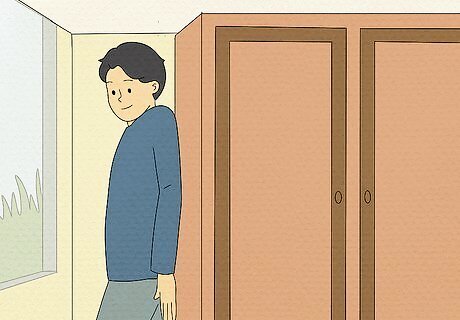
Search for items with long edges that you can hide behind. Look for large pieces of furniture or house fixtures that are wide and long, and are difficult to peer around. If the seeker doesn’t feel like doing a thorough job in a certain room, you might be able to get away with an unexpectedly clever hiding spot. For example, if there’s a room that’s divided by a sudden closet or angular wall, try hiding against the side of this surface. If the seeker doesn’t peer all the way around the corner, they might not notice you.
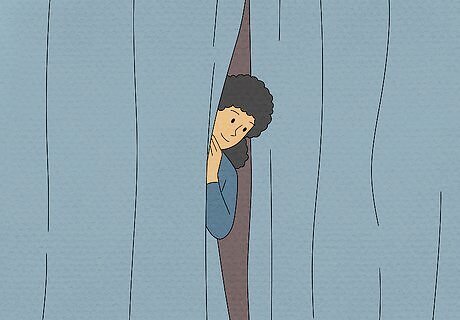
Take advantage of long curtains when you’re playing inside. While thinner, more sheer curtains aren’t the best hiding spot, thick drapes can provide an excellent place for you to hide on short notice. Take advantage of the ruffles in the drapes as you position yourself behind them, and stand as still as possible! This works best with floor-length drapes, so your feet aren’t noticeably sticking out on the bottom. If you hide here, just be sure you’re comfortable standing for a long period of time.
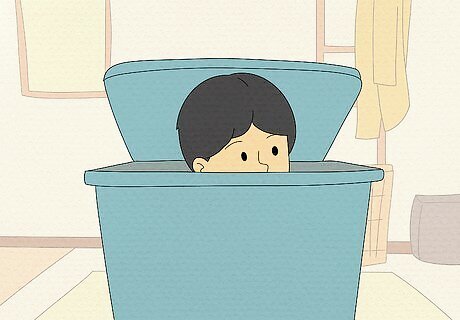
Tuck yourself into a clothes hamper to hide in plain sight. Find a laundry basket that you can squeeze or crouch into. Don’t worry if there’s clothing in the hamper; if anything, this makes your hiding spot more convincing! Take out the clothing and get into the bottom of the basket, then cover yourself with clothing! Make sure that you have enough room to breathe when you’re doing this.

Look for shrubs or tall grass that you can blend in with. Search for spots in a yard or park that appear especially inconspicuous to the naked eye. Squat, kneel, or lay down beneath a bush or some tall grass so that you can blend in better. If you really want to pull off this hiding spot, try wearing darker clothes! Be sure to wear clothes that you don’t mind getting dirty or dusty.
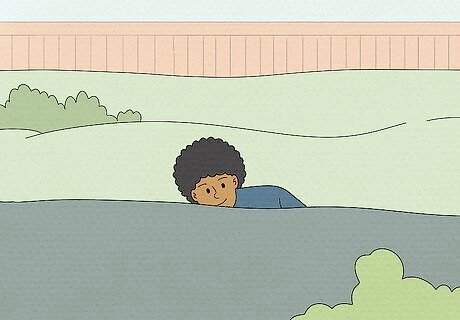
Search for unlikely spots to hide in a yard, like a ditch. Look along the edge of your game’s boundaries, like the property line of a yard or the edge of a lawn. Even if it takes you a little bit longer, try to go to these outer areas and make yourself as flat as possible. There’s a chance that the seeker won’t notice you if you’re hiding in plain sight. To make the hiding spot more convincing, wear neutral-toned or darker clothes when you’re playing the game.Tip: Prepare yourself for ticks whenever you play outside. Whenever possible, spray yourself with an insect repellent and wear clothing that contains permethrin. Also, check any exposed skin once you’re finished playing an outdoor game.
Strategies for Hiding
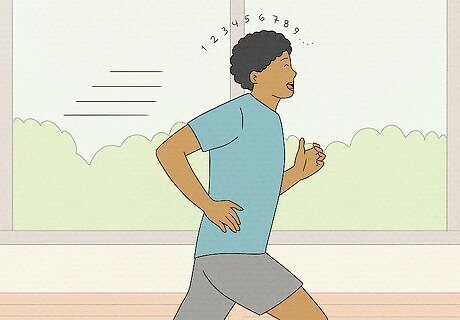
Keep track of how much time you have while you hide. When playing Hide and Seek, many seekers count for 60 seconds, but your friend might agree to different amount of time. Make sure you know how long you have, and count in your head while you hide to keep track. Count silently in your head as you rush for a hiding spot. Don’t count out loud, or the seeker will hear you!

Survey some hiding spots before you decide on one. Take full advantage of your hiding time by making mental notes of some good hiding spots. Then, when your time’s almost up, hurry to the one that seems most promising, and keep the others in mind for later. In later rounds, hide in places nobody has hidden before.
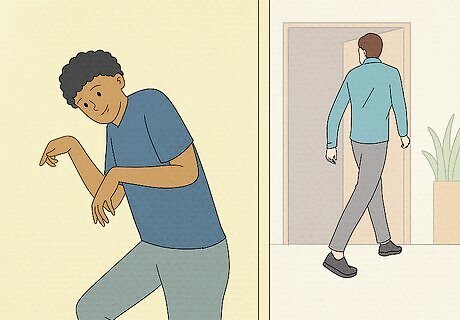
Move to a hiding place the seeker has already checked. When the seeker starts seeking, keep an eye on them, if you can. Then, sneak to a spot they’ve already checked after they move away from you. They probably won’t check there again for a while. Check and make sure that you’re allowed to do this before the game starts. Some groups might have stricter rules than others!
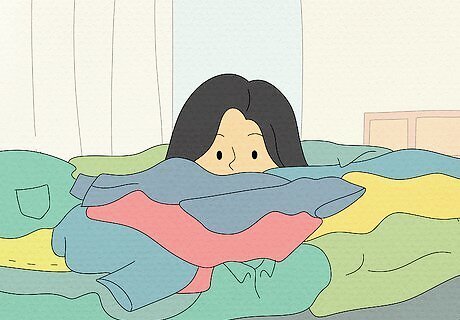
Look for cluttered areas that provide a lot of camouflage. Avoid empty areas and rooms without much furniture. There won’t be many places to hide, and you’ll be easy to spot. Instead, look for multi-colored areas, or places with lots of stuff, where you can blend into the background. Wherever you hide, try to make yourself as small as possible to avoid being seen.
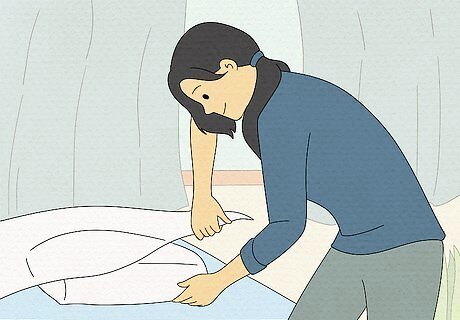
Set up decoys to fake out the seeker. While the seeker is counting, set up a fake hiding spot. For example, stuff a few pillows under a blanket and lay it on a couch or bed. The seeker might get distracted and check under the blanket, which wastes their time and gets into their head. Or, when the counting starts, loudly rush one direction to make the seeker think you’re going one way, then quietly double back and hide somewhere in the other direction instead.

Inhale slowly so the seeker doesn’t hear you hiding. Avoid giving yourself away by breathing heavily. Instead, imitate military breathing exercises and take low, slow breaths. If you’re quiet, the seeker won’t be able to detect you by sound! Practice this type of breathing throughout the day, even when you’re not playing the game. This will help you gain expertise for future rounds! As tempting and clever as it might originally seem to hold your breath, you might find yourself in trouble once your lungs need more air.Tip: While you’re taking low, slow breaths, avoid shifting your body. Even if it’s a small movement, the seeker might be alerted to your presence by a stray twitch or shake.
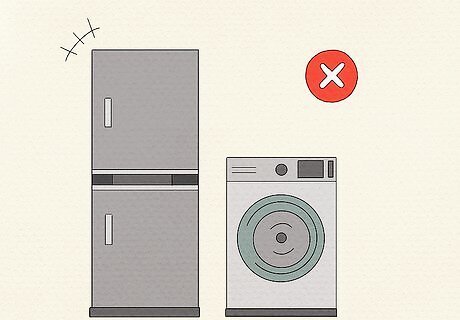
Avoid hiding in any dangerous areas during the game. Avoid the temptation to hide on an especially high ledge, in a large appliance like a fridge or clothes dryer, or another dangerous place. As creative as these ideas are, there’s a big risk for injury—or worse—if you try and fit yourself in an unstable area. Before the round starts, clarify with the other players if there are any spots that are off-limits. If you aren’t sure if you’re allowed to hide in a certain area, then don’t hide there at all. You can’t master the game if you end up breaking the rules!
Strategies for Seeking

Keep track of the places you’ve already searched. Take a mental note of the rooms and areas that you’ve looked through. Once you’ve examined a room thoroughly and found no people hiding inside, mark that room off as searched, but revisit it later to keep other players on their toes. Keep in mind that hiders might sneak into rooms that you’ve already searched. Once you’ve searched all main areas, double back to find any stragglers in the previously checked rooms.
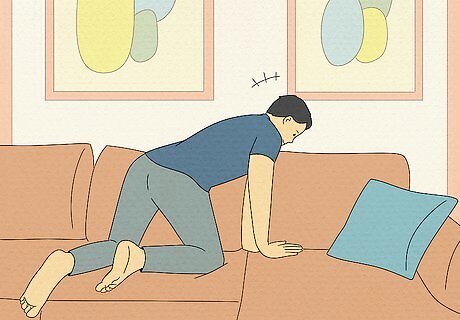
Check the best spots first, then the less likely spots. First check the most cluttered rooms or most tempting spots you know of yourself, where hiders are most likely to go. Then, check the less likely spots—hiding behind a door might seem too obvious, but that’s what the hiders might be expecting you to think. Check anyway! Also, check in places that seem a little too difficult to hide in—the hiders might surprise you. Be on the lookout for walls that cut through the center of a room, in addition to large furniture like desks and long sofas.
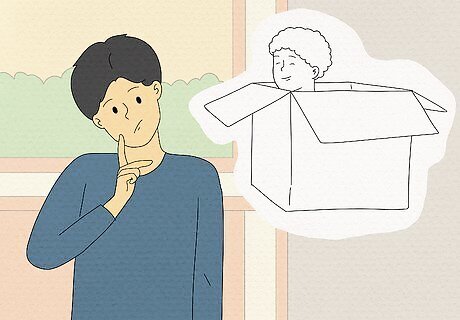
Put yourself in the hiders’ shoes to think outside the box. Put yourself in your friends’ positions: If you were them, where would you be most likely to hide? Keep this question in mind as you search throughout the hiding area. Also, hiders are most likely to disperse, not group up. Consider their size, athletic ability, whether they’re afraid of dark spaces, and other factors to get a better feel for where to look.
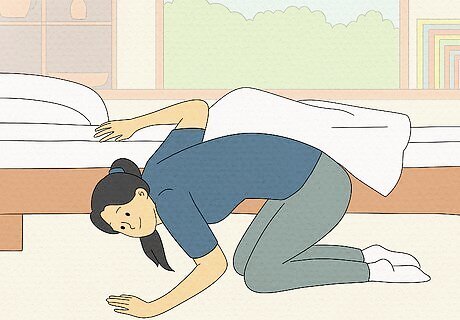
Search lower areas to see if anyone is crouching to hide. Look under beds, tables, and any other surface that can fit a person beneath it. Although many people hide in perfectly normal and average spots, others might hide by squatting in a closet, or by lying beneath a table. Keep this in mind when you’re playing with smaller/younger individuals, especially.
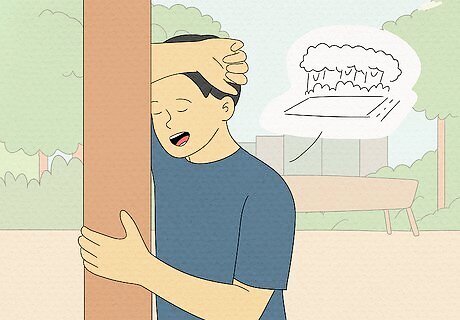
Memorize your playing area for the round. Take a moment to commit the basic landscape of your playing area to memory. Whether you’re playing outdoors or indoors, keep in mind the widest, most open spaces as well as the smaller, more compact places where players are most likely to hide. For instance, it’s much less likely that players will hide in the large, open areas of your play area. Instead, you might check the cluttered, smaller, or trickier spaces first.
















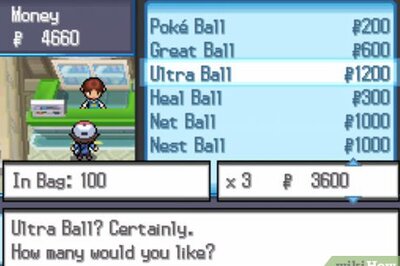


Comments
0 comment